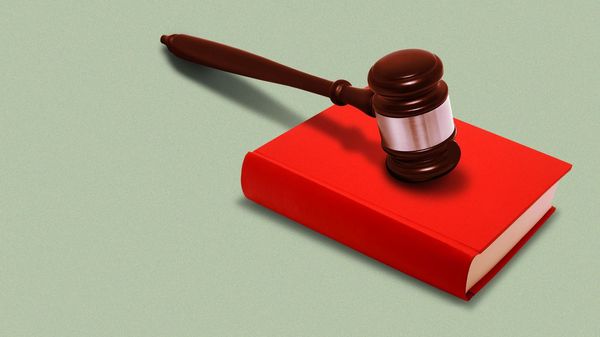
On 8 March 2023, International Women’s Day, Russian soldiers were handing out tulips and boughs of mimosa to women and girls in the city of Melitopol, southern Ukraine – a move designed to promote friendly relations between the occupiers and the inhabitants.
But the night before, someone had been discreetly sticking posters to walls and lamp-posts. They bore the image of a young Ukrainian woman, dressed in a traditional embroidered shirt, smashing a bouquet over a Russian soldier’s head. “I don’t want flowers,” read the slogan. “I want my Ukraine.”
This was one of the earliest acts of a women’s resistance movement in Russian-occupied Ukraine that claims hundreds of members, from Crimea in the south to the Luhansk region in the east.
The movement is called Zla Mavka, which, when roughly translated, means “wicked forest spirit”. The mavky of Ukrainian mythology are female supernatural beings who tempt men to their doom.
Using the figure of the mavka is a twofold joke: it is a reference to a popular drama by early-20th-century Ukrainian feminist Lesya Ukrainka; and is a play on the fact that Ukrainians often refer to the Russian military as “orcs”, the brutish fighters in JRR Tolkein’s The Lord of the Rings. “Orc is no match for mavka,” reads one of the movement’s posters.
The women involved in the network undertake small acts of sabotage and resistance: disseminating a Ukrainian news-sheet; burning Russian propaganda; or dropping fake Russian rouble notes in the streets.
“We piss off the occupiers, give them a headache and don’t let them forget that they are occupiers here,” one of the founders of the movement said in an interview from Russian-occupied southern Ukraine via a messaging app.
When curious passersby pick up one of Zla Mavka’s sham 2,000 rouble notes, they will find it bearing not, as expected, the image of the Russky Bridge that connects Vladivostok with Russky Island in Russia’s far east, but instead the Crimean Bridge between Russia and Crimea at the moment it was hit with a Ukrainian bomb in October 2022.
The real Crimea-themed 200 rouble note was issued by the Bank of Russia in 2017, three years after Russia’s illegal annexation of the peninsula, and shows the archaeological site of Chersonesus near Sevastopol, and on the other side, the early 20th-century Monument to Sunken Ships in Sevastopol Bay.
On Zla Mavka’s fake version, though, a Ukrainian flag is seen rising among the classical ruins. Turn it over and the Russian battleship Moskva sinks into the Black Sea. The cruiser went down in April 2022, with Ukraine saying it targeted it with missiles.
Women share photographs of acts of resistance, as well as accounts of their daily life under occupation, on the Zla Mavka channel on the Telegram app. To keep each other safe, they are anonymous, even to each other.
The Guardian was not able independently to verify the veracity of the accounts published on the channel, but they bear the hallmarks of separate accounts of life under Russian occupation. Recognisable landmarks appear in the background of some of the images.
Word of the movement’s activities is gradually spreading in free Ukraine. Zla Mavka feature in a touring exhibition, Unseen Force, highlighting non-violent resistance to the Russian invasion, in Kyiv, Lviv and, until 5 January, in Dnipro. It opens in Odesa in February.
The women frequently employ dark humour. “There are two sides to this,” said the co-founder, who asked to be known only as Mavka for safety reasons. “First, we ourselves need this humour, because without it you can simply go crazy here. And on the other hand, it really infuriates the Russian occupiers.”
Spreading pro-Ukrainian information under occupation is dangerous, and has become more so as time goes on. The proliferation of surveillance cameras in Russian-occupied cities has made putting up posters particularly perilous.
“Of course we are afraid,” said Mavka. “Everyone understands the risks very well and understands what could threaten them in the event of exposure. We try to be very careful and warn all our activists about all the rules. Every woman understands what she is doing and everyone makes her choice.”
The early posters, from spring 2023, featured a distinctive illustrated character: a long-haired, smiling young girl wearing a traditional Ukrainian flower garland, accompanied by various slogans: “Let’s take the Russian rubbish out,” for example. In more recent months, the action has included the simple Zla Mavka symbol – a triangle surmounted by a sunburst – pinned to the wall of the lobby of an apartment block.
“We wanted it to be simple, first of all, so that it would be easy to draw in difficult conditions,” said Mavka of the symbol. “It had to have a female form, and then we added the sun that would definitely rise over Ukraine when Russia lost.”
Women contact the movement by writing in the first instance to a chatbot. Material appears on the publicly viewable Telegram channel only after it is checked, as far as possible, for authenticity and screened for information that could compromise the women’s identities. The diaries published on the Telegram channel are accompanied by drawings provided by a supporter of the movement in free Ukraine.
The accounts of daily life sent in by the women are revealing. One woman in Yalta, Crimea, posted this October about preparing her apartment for rental. “I can’t afford to take risks. Books in Ukrainian, about Ukrainian art, a history textbook in English, foreign magazines about feminist and queer art, all this needs to be put away before strangers enter the house,” she wrote.
Assessing the degree of resistance in occupied areas is difficult. As the diary entries recount, schools have now introduced Russian curricula, and many families from Russia have moved into the occupied areas. One diary describes the proliferation – on public transport, on cars, on buildings – of the letter Z, the Russian symbol of the 2022 invasion of Ukraine.
Difficult subjects are raised in the diaries, such as Ukrainian men being mobilised into the Russian army. “I’m writing to you, girls, and crying,” a woman from an occupied part of the Zaporizhzhia region wrote in February this year. “They took my son. Told him that he was going to serve in the military … it turns out that he would be treated like a traitor anyway, by either Ukrainians or Russians.
“My conscience punished me severely,” she added, “because he told me to flee, and I said I had no one to leave with the cows. And I considered myself too old to go anywhere. And he stayed with me. And now I’m crying, and don’t know what to do.”
One of the movement’s helpers from free Ukraine, who asked to be known, for safety reasons, only as Olha, said: “They understand each other’s daily problems. And that’s why women started to join them. It has become more and more of a women’s community, not solely a resistance movement.
“This not some special services operation, it is not something military, it is from woman to woman – woman under occupation to women under occupation.”







